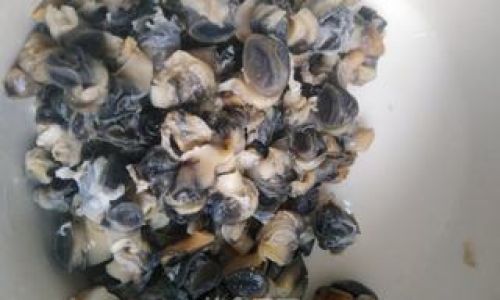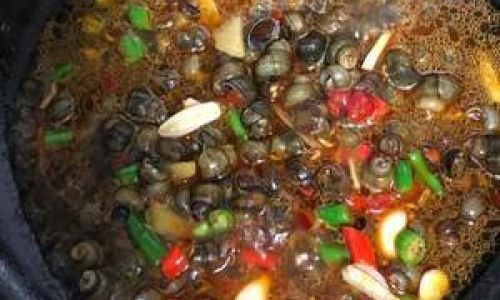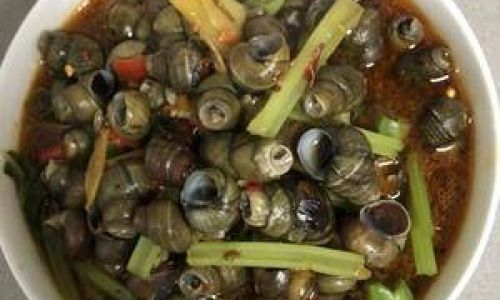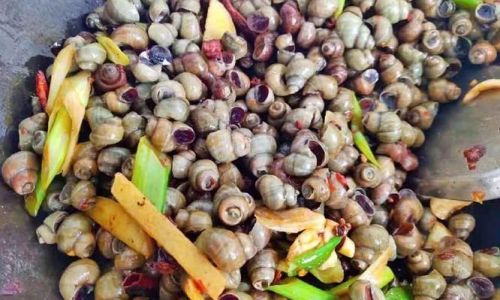Introduction
Stir-fried snail meat, a dish that tantalizes the senses with its rich umami depth and textural contrasts, has transcended cultural boundaries to become a beloved staple in global cuisine. From the bustling night markets of Southeast Asia to the refined kitchens of European gastronomy, this humble ingredient has evolved into a symbol of culinary versatility. This article delves into the intricacies of preparing stir-fried snail meat, exploring everything from ingredient selection to advanced cooking techniques. Whether you’re a novice cook eager to experiment or a seasoned chef seeking inspiration, this guide will equip you with the knowledge to craft a dish that balances tradition with innovation.
The Allure of Snail Meat: A Brief Historical and Cultural Context
Snails have been consumed for millennia, with archaeological evidence suggesting their presence in ancient Roman and Mediterranean diets. In France, escargots de Bourgogne are a luxury delicacy, often served in garlic-herb butter. Meanwhile, in China, stir-fried snail meat, or luo si, is a street food favorite, prized for its chewy texture and ability to absorb bold flavors. Thai and Vietnamese cuisines incorporate snails into spicy, aromatic stir-fries, often pairing them with lemongrass, chili, and basil. This cross-cultural appeal underscores the snail’s unique capacity to adapt to diverse flavor profiles, making it a canvas for culinary creativity.
Selecting the Perfect Snail: Species, Sourcing, and Preparation
The foundation of a great stir-fry lies in the quality of the snail meat. Common edible species include the Roman snail (Helix pomatia), the garden snail (Cornu aspersum), and various apple snail varieties (Pomacea spp.). Freshness is paramount; look for snails with intact shells, firm bodies, and a mild, oceanic aroma. Avoid specimens with cracked shells or a foul smell, which may indicate spoilage.
1 Purging and Cleaning
Snails require thorough purging to remove grit and impurities. To do this:

- Place live snails in a container with cornmeal or oatmeal for 24–48 hours, replacing the mixture daily. This encourages them to expel sand.
- After purging, boil the snails in salted water for 5–7 minutes, then extract the meat using a toothpick or snail fork.
- Rinse the meat under cold water to eliminate residual debris.
2 Pre-Cooking Techniques
Some chefs prefer to simmer snail meat in court-bouillon (a flavorful broth) for 10–15 minutes before stir-frying. This enhances tenderness and infuses subtle flavors. However, skipping this step and relying solely on high-heat cooking is also viable, provided the snails are fresh.
Essential Ingredients: Building Flavor Layers
Stir-fried snail meat thrives on harmony between aromatics, spices, and seasonings. Below is a breakdown of key components:
1 Aromatics
- Garlic and Ginger: Mince or grate these for a pungent base.
- Shallots or Onions: Caramelize for sweetness, or use red onions for color.
- Chili Peppers: Fresh bird’s eye chilies add fiery heat; dried red chilies contribute smokiness.
2 Seasonings
- Soy Sauce: Use light soy for saltiness, dark soy for color.
- Oyster Sauce: Provides depth and a hint of sweetness.
- Fish Sauce: A staple in Southeast Asian cooking, it adds briny complexity.
- Sugar: A pinch balances saltiness and enhances caramelization.
3 Enhancements

- Herbs: Thai basil, cilantro, or mint add freshness.
- Vegetables: Bell peppers, baby corn, or bamboo shoots introduce crunch.
- Alcohol: A splash of Shaoxing wine or rice vinegar deglazes the pan and brightens flavors.
Mastering the Stir-Fry Technique: Heat, Motion, and Timing
Stir-frying is a high-heat, quick-cooking method that preserves texture and locks in flavor. Follow these steps for perfection:
1 Equipment
- Wok: Carbon steel woks distribute heat evenly and allow for tossing.
- Spatula: A metal spatula with a curved edge ensures efficient stirring.
2 Heat Management
- Preheat the wok over high heat until it smokes lightly.
- Add oil (peanut, vegetable, or sesame) and swirl to coat the surface.
3 Cooking Sequence
- Aromatics: Stir-fry garlic, ginger, and chilies for 15–20 seconds until fragrant.
- Snail Meat: Add and sear for 2–3 minutes until lightly browned.
- Vegetables: Toss in quick-cooking veggies (e.g., bell peppers) and stir-fry for 1–2 minutes.
- Sauce: Pour in the seasonings and stir vigorously to coat.
- Finish: Add herbs, toss, and remove from heat immediately to prevent overcooking.
4 Key Tips

- Avoid overcrowding the wok; cook in batches if necessary.
- Use a slurry of cornstarch and water to thicken the sauce, if desired.
- Adjust seasoning at the end—soy sauce darkens the dish, while a squeeze of lime adds acidity.
Flavor Profiles: Balancing Acts and Regional Inspirations
The beauty of stir-fried snail meat lies in its adaptability. Experiment with these profiles:
1 Classic Chinese Style
- Sauce: Light soy sauce, oyster sauce, and a dash of white pepper.
- Aromatics: Scallions, garlic, and ginger.
- Garnish: Toasted sesame seeds and cilantro.
2 Spicy Thai Fusion
- Sauce: Fish sauce, lime juice, palm sugar, and chili paste.
- Aromatics: Lemongrass, galangal, and Thai basil.
- Enhancement: Fresh coconut milk for creaminess.
3 Mediterranean Twist
- Sauce: Tomato paste, white wine, and smoked paprika.
- Aromatics: Roasted garlic, oregano, and parsley.
- Garnish: Crumbled feta and toasted pine nuts.
Troubleshooting Common Pitfalls
Even seasoned cooks encounter challenges. Here’s how to address them:

- Rubbery Texture: Overcooking snail meat toughens it. Stir-fry for no more than 3–4 minutes.
- Gritty Bites: Inadequate purging or rinsing leaves residue. Double-check cleaning steps.
- Bland Flavor: Underseasoning is common. Taste and adjust sauces incrementally.
- Oily Residue: Excess oil pools in the wok. Use a minimal amount and tilt the wok to drain if needed.
Health and Nutritional Benefits
Snail meat is a lean protein source, rich in iron, magnesium, and selenium. It’s low in fat and calories, making it suitable for health-conscious diets. Additionally, snails are a sustainable protein option, as they require minimal feed and water compared to livestock.
Pairing Suggestions: Beverages and Sides
Elevate your stir-fried snail meat with these accompaniments:
- Beverages: Ice-cold beer (lager or wheat ale), Riesling, or green tea.
- Starches: Jasmine rice, udon noodles, or crusty baguette.
- Sides: Pickled vegetables, cucumber salad, or stir-fried morning glory.
Advanced Techniques: For the Culinary Explorer
Take your dish to the next level with these methods:
- Smoking: Use a smoking gun to infuse the snail meat with applewood or tea smoke before stir-frying.
- Fermentation: Incorporate fermented black bean paste or kimchi juice for umami complexity.
- Textural Play: Deep-fry half the snail meat for crunch, then stir-fry the rest for contrast.
Conclusion: The Joy of Experimentation
Stir-fried snail meat is more than a dish—it’s a testament to the alchemy of ingredients, heat, and creativity. By mastering the basics and embracing experimentation, you can transform this humble ingredient into a culinary masterpiece. Whether you prefer the fiery kick of Thai spices or the subtle elegance of French herbs, the world of snail meat awaits your exploration. So grab your wok, ignite your stove, and let the sizzle of stir-frying guide you on a gastronomic adventure.
Epilogue: Sustainability and Ethical Considerations
As global demand for snails grows, ethical sourcing becomes critical. Opt for farm-raised snails from reputable suppliers to avoid overharvesting wild populations. Additionally, consider using invasive snail species (e.g., apple snails in Florida) in your recipes—a delicious way to combat ecological disruption.

With this guide in hand, you’re now equipped to craft stir-fried snail meat that delights the palate and honors the ingredient’s storied history. Bon appétit!






0 comments